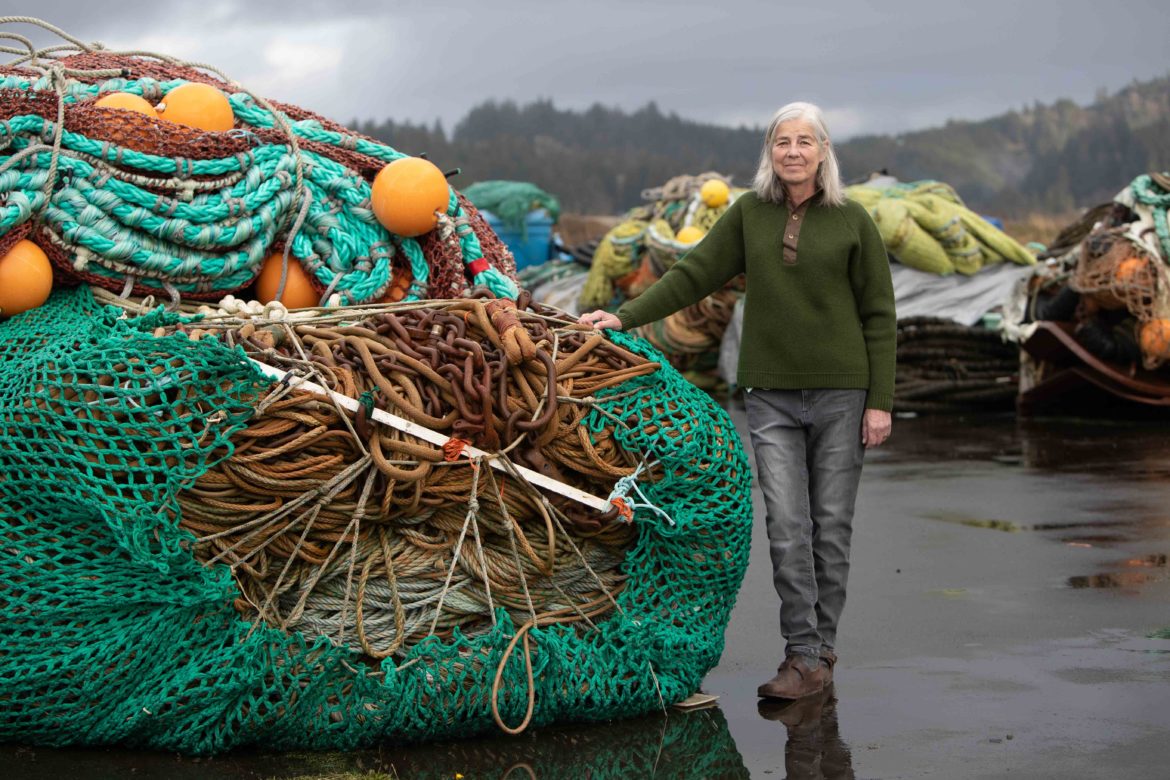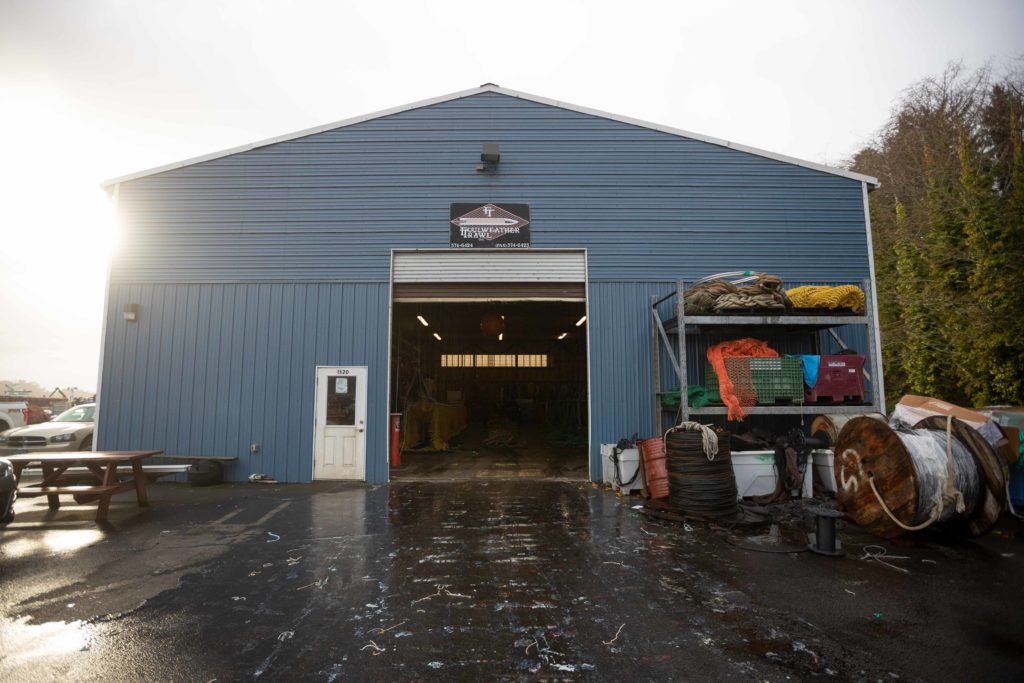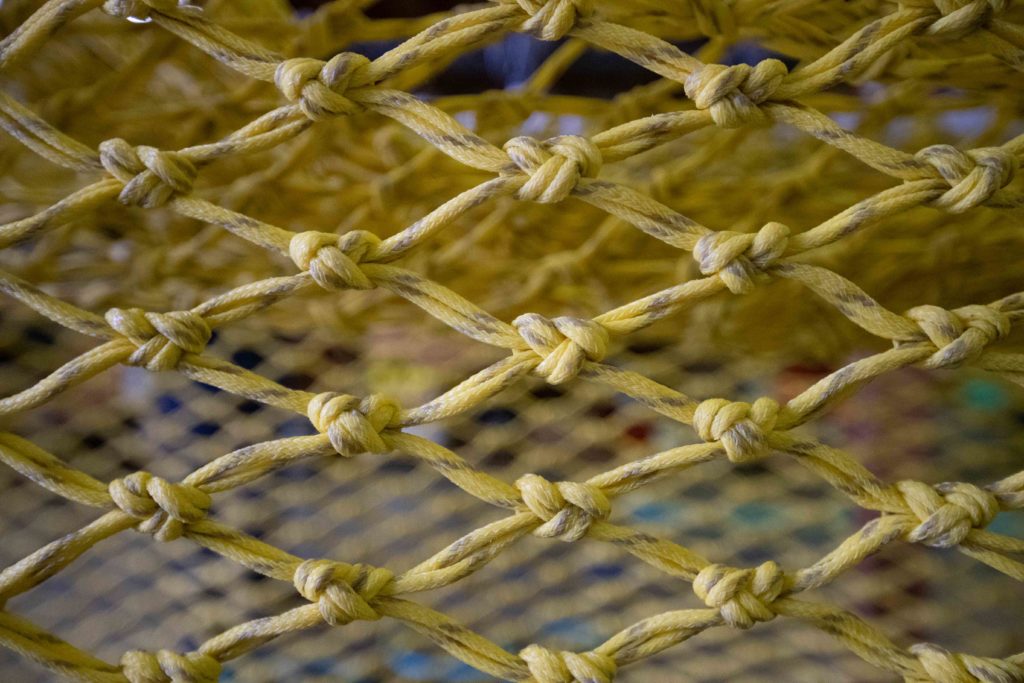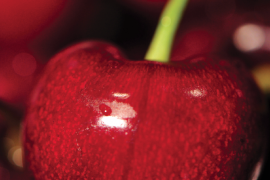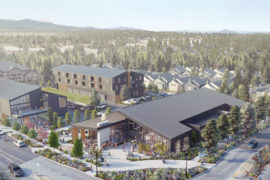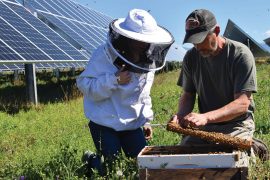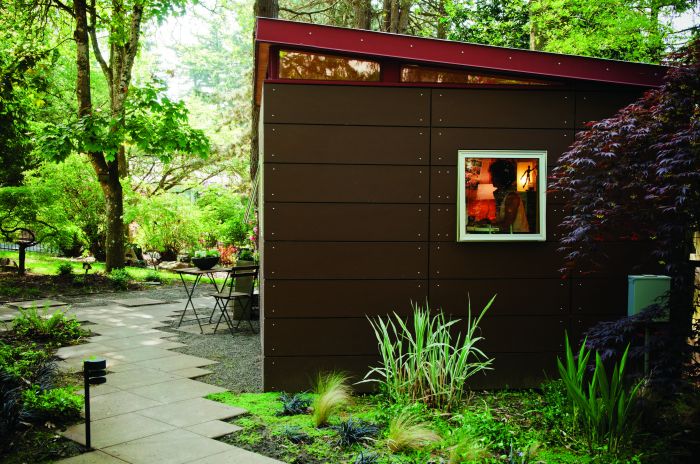How Sara Skamser is helping preserve Oregon’s commercial fishing industry
written by Shirley A. Hancock photography by Amanda Loman
In one of the world’s most dangerous professions, Sara Skamser is known as “Trawl Goddess of the West Coast.”
Skamser’s company, Foulweather Trawl in Newport, custom makes commercial fishing nets. It’s the only net loft in the state and the top choice for many of the more than 1,000 Oregon commercial fishermen roaming the West Coast and Alaska.
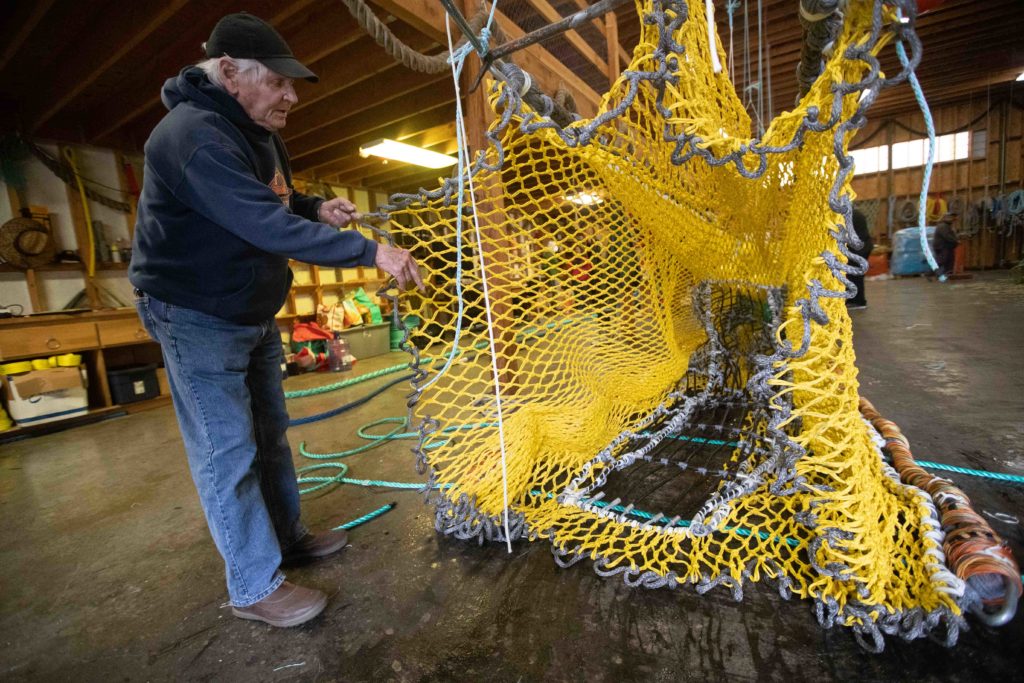
“We roll like a carnival ride out there. One hundred mile an hour winds and waves several stories high can bust out a window, sweep guys off the deck, and stall the engine,” said Kurt Cockran, a fourth-generation commercial fisherman and early adopter of Foulweather Trawl nets. “The one thing I don’t worry about is my nets.”
“If they aren’t catching fish, they know it’s not the net, because it came from Foulweather Trawl,“ Skamser said.
Foulweather Trawl nets are engineered to catch more of the right fish and fewer of the wrong fish. Fishermen can be shut down early or decimate a fishery if, for instance, their nets haul in salmon when they’re trying to catch shrimp.
Inside the “net loft,” artisans with three years of training weave colorful mesh and rope into trawl nets for bottom (flounder, sole, rockfish), mid-water (whiting) and shrimp fishing. Nets range in size from 30 to 1,800 feet, fitting boats as large as factory trawlers. A recent “cod end”—the last 130 feet of a 1,500 foot long net—cost six figures. On the first tow, the net secured 319,000 pounds of fish in just seventeen minutes.
The net loft is also where scientists, academics, conservationists and fishermen go to “kick the can” on new net technology that’s helping preserve Oregon’s $690 million fishing industry.
Skamser is the bridge between the scientists and the fishermen.
“Sara is hardheaded and doesn’t take no for an answer,” Cockran said. “She’s really earned the respect of the entire community on the coast, especially the fishermen.”
Skamser said she’s passionate about sustainable fishing. “My wicked sense of humor and lack of fear of men helps,” she said, laughing. “I grew up with guys, plus I’m a little like my mother. She was sweet, but you didn’t mess with her.”
Skamser, the only girl in a supportive family of school teacher parents and three brothers, grew up along Wisconsin’s Great Lakes. “One day I saw a VW with Oregon plates and thought, ‘That’s where I want to go! They have mountains, the Columbia River Woody Guthrie sang about—and the ocean!’”
In almost every job leading to the Pacific, Skamser was the lone female. At 19 years old, she worked welding freighters on the Great Lakes, welding box cars in Portland and fishing boats in Newport.
“I didn’t know a troller from a trawler,” Skamser said. “But I could do all kinds of welding. As the only woman welder in Newport, I suddenly had a fan club. Guys would drop off presents, flowers and notes.”
After crab, salmon and tuna fishing, she tried the ancient craft of net-making. In 1984, the worst possible economic climate, Skamser launched Foulweather Trawl. “For the first time, I was intimidated. I sat down in the bathroom of our rental and would call the fishermen. ‘Hi, this is Sara. I’m still here if you need your net fixed.’”
The National Oceanic and Atmospheric Administration had just declared the ground fishery a “disaster” due to overfishing. Scientists began seeking new ideas and technology that would reduce bycatch, the unintended additional fish caught. “We needed fishermen to talk with us and trust us,” said NOAA research biologist Waldo Wakefield. “At our first meeting, there was Sara and one fisherman, Kurt Cockran.”
“Fishermen have valuable data from their log books and they care about sustainable fishing,” Skamser said. They just weren’t being asked as a courtesy.
Skamser began troubleshooting in the loft with the fisherfolk and scientists from NOAA, Oregon Department of Fish and Wildlife and the Pacific States Marine Fisheries Commission. They experimented with designs like shrimp excluders, which have what looks like a giant barbecue grill woven into a funnel-shaped net. The shrimp slip through the grill and the big fish, like salmon, can swim out openings on the side. On a giant flat screen in the loft, they studied videos from cameras attached to the nets, helping determine the precise angle and size of the grids. Other innovations include nets in multiple colors to help identify proper placement, and the “idiot stick” net, with welded markers that indicate where to pick up and bundle the nets onboard.
Many of the nets are also used in scientific research projects.
“Sara has significantly contributed to restoring a fishery that was a disaster twenty years ago,” Wakefield said. “We now have more than 100 ground fish species, with many of them earning the international marine stewardship classification for sustainability.”
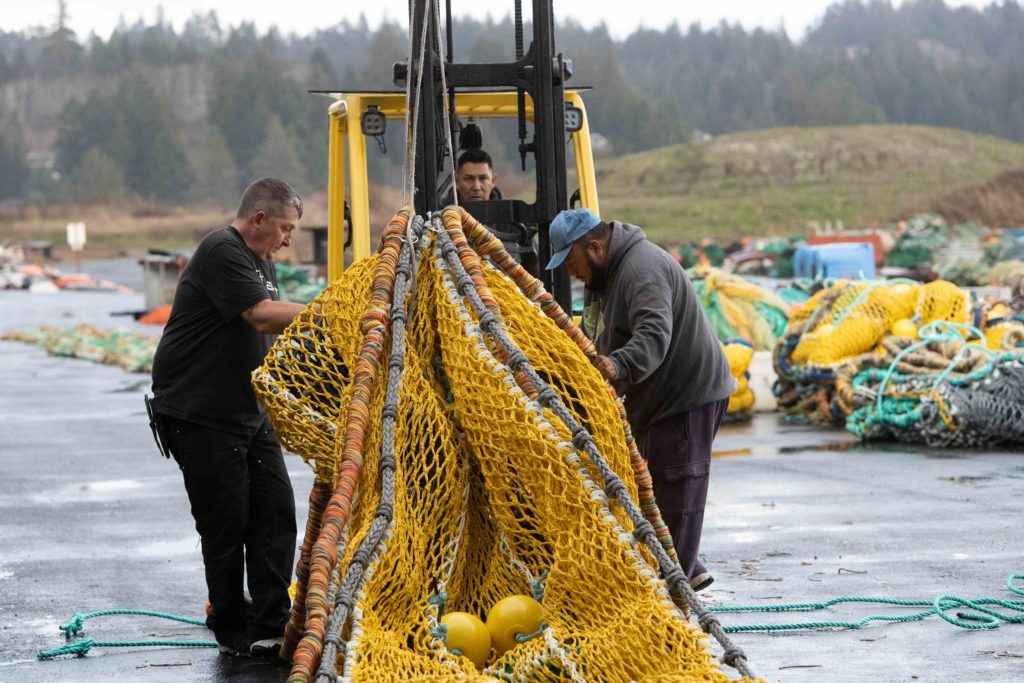
Foulweather Trawl is well positioned for the future, even as the Trawl Goddess tackles her biggest job yet—battling a rare cancer.
“I’ve always been the strongest, tallest and fastest, so this just cut me to the quick,” Skamser said. “But my husband and I have been attacked by love from the entire West Coast fleet and it just warms the cockles of my heart.”
As Skamser recovers from life-extending surgeries, she looks out her windows to the Pacific and proudly watches her fishermen at work. “Oregonians should be proud of our fishermen. Our company motto is ‘Changing the world one mesh at a time,’ and every time a boat goes out, a piece of us goes with them.”



